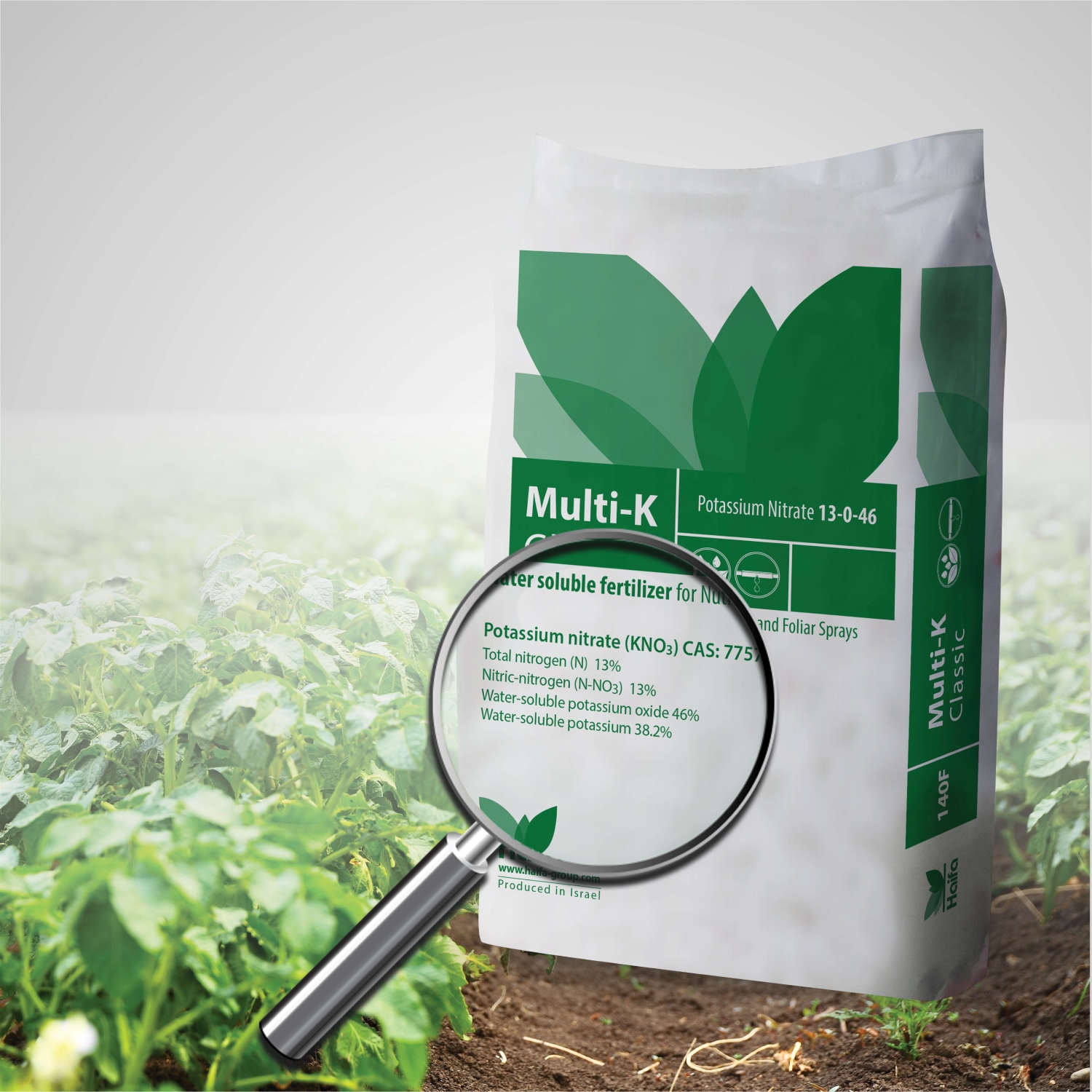
Growers sometimes ask me how come that potassium nitrate 13-0-46 = 59% and not 100%.
Let’s start with a basic explanation about the NPK nutrients and their percentages (%) in fertilizer formulae.
Fertilizer's formula usually refers to the content of nutrients in their oxide forms (N-P2O5-K2O).
In Scandinavia, Australia and South Africa it is more common to refer to elemental forms (N-P-K).
For example:
The nutritional composition of Multi-K™ Classic is 13-0-46.
This means that the fertilizer contains
- 13% nitrogen (N)
- 0 % phosphorus oxide (P2O5) = 0% phosphorus (P)
- 46% potassium oxide (K2O) = 38.3% potassium (K)
So how do we sum to 100%?
Here we have to consider the actual form of the nutrients in the fertilizer:
In mineral fertilizers, nitrogen may be present as ammonium, nitrate or amide (urea), phosphorus is present mainly as phosphate, and potassium is present as K+ ion.
The following table shows the ratios between elements, oxides, and the forms mentioned above.
| Ammonium | NH4 = | N x 1.28 | |
| Nitrate | NO3 = | N x 4.43 | |
| Amide | (NH2)2CO= | N x 2.14 | |
| Phosphate | H2PO4= | P x 2.68 | P2O5 x1.15 |
| Potassium | K = | K x1 | K2O x 0.83 |
| Use the conversion calculator to calculate nutrient quantities in their oxide and elemental forms. |
Now, 13% N as NO3 means that the product contains 13x4.43= 57.6% NO3
and 46% K2O are 46/1.2= 38.3% K.
These sum up to 57.6+38.3=95.9%
Not 100% yet….
The difference is attributed to
- Actual analysis which is somewhat higher than 13-0-46
- Presence of moisture and trace impurities in the product
Note that Multi-K™ GG, Multi-K™ pHast and Multi-K™ Reci contain higher rates of nutrients, and less impurities.



